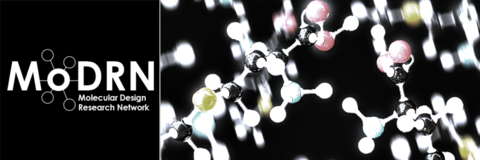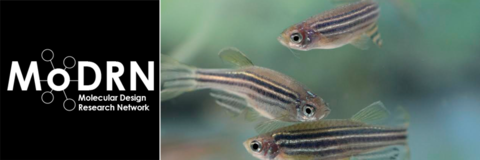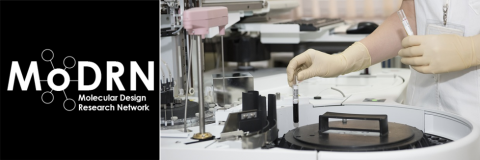Crossroads of Computational Chemistry and Toxicology
Introduction: There are thousands of chemicals and only a fraction have been evaluated for specific classes of toxicity (carcinogenicity, genotoxicity, developmental toxicity, etc). It is not possible to test all the chemicals with in vitro and in vivo assays. Computational methods, such as the in silico method of testing (and predicting toxicology before development), is the newest way by which to ensure that toxicology is considered in molecular and product design and that potential toxicological impacts are known.
Learning Outcomes: By the end of this module, the student will be able to:
- Identify ways in which chemicals are tested for adverse health effects.
- Describe new methods that are helping scientists predict toxicity.
- Investigate the benefits of computational toxicology.
Background and Information: One of the principle goals of the Green Chemistry movement is to use modern methods of chemical synthesis and production to avoid the legacy problems associated with past practices that have caused harm to human health and the environment. This involves consideration of the toxicity of the chemicals being synthesized as well as the toxicity of intermediates used, or waste products generated during that synthesis. However, because of the little amount of toxicity data available for many chemical entities, this remains a big challenge to practitioners of Green Chemistry. One approach being pursued is to use chemical structure activity relationships to predict the toxicity of chemicals using in silico and in vitrotoxicity methods in order to predict in vivo toxicity. By applying these methods we hope to be able to design safety into new chemical structures so as to avoid harmful outcomes.
What is in vitro Testing? In vitro testing is any test that occurs within cells that are not in an organism. In other words, these cells are in a biological medium or culture outside of the organism from which they came. These tests are very helpful in identifying aspects of how a chemical reacts at the cellular level - specifically for absorption, distribution, metabolism and excretion (ADME) processes without doing the testing on the actual organism itself. One disadvantage is that the results may be difficult to apply to a whole organism, as cells in culture may mitigate or offset toxicants differently.
What is in vivo Testing? In vivo testing is that which is done on the whole organism to study adverse health effects (or other parameters). These may be on microbes, or Daphnia, or zebrafish, mice, rabbits, etc. An advantage is that it allows the researcher to take into consideration the toxicological impact on the organism as a whole. A disadvantage is that each species may react differently to a toxicant, so results cannot be fully extrapolated to every species and results must be interpreted carefully. Researchers use many animal models, and it is important to know that one animal model for all chemicals does not exist to predict toxicity to humans or the environment. Also, there may be ethical issues when testing larger organisms such as fish or animals.
What is in silico? The United States Environmental Protection Agency (US EPA) defines in silico testing as the“integration of modern computing and information technology with molecular biology to improve agency prioritization of data requirements and risk assessment of chemicals.” A variety of databases are now available that contain toxicology testing information that can identify chemical induced biological activity mechanisms. In silico is the way to test toxicological and chemical properties using a computer and without the need to use in vitro or in vivo testing methods. Non-testing methods for predictive toxicology is receiving more attention as one way to reduce animal testing. Databases, Structure Activity Relationships (SAR) methods, pharmacophores, homology models, and other approaches such as data mining, network analysis tools, machine learning, etc are all aspects of this methodology. In silico results are increasing in use for making policy and regulatory decisions. In silico methods do not require animals for testing, like in vivo models, and the results can be applied beyond cellular impact in a more complex manner than in vitrotesting. We refer to this as physiologically-based pharmacokinetic (PBPK) modeling. PBPK is a mathematical modeling process that predicts the absorption, distribution, metabolism and excretion (ADME) of chemical substances (synthetic or natural) in humans and other species.
Video: Dr. Jakub Kostal, Associate Research Scientist, The George Washington Unversity and CSO of Sustainability A to Z
Assignment:
Assignment: Discuss the pros and cons of using in-silico testing for chemical toxicity research. Describe some the databases that are used for this type of study. When it is said that in-silico testing is “animal-free” is that true for the data that in-silico testing uses? Explain.
Click here to evaluate this module.
Resources:
- Raunio, H. (2011). In Silico Toxicology – Non-Testing Methods. Frontiers in Pharmacology, 2, 33. doi:10.3389/fphar.2011.00033. Retrieved fromhttp://www.ncbi.nlm.nih.gov/pmc/articles/PMC3129017/
- Environmental Protection Agency. (2015). Computational toxicology research. Retrieved fromhttp://epa.gov/comptox/communities_of_practice.html
- Environmental Protection Agency. (2015). Estimating toxicity-related biological pathway altering doses for high-throughput chemical risk assessment. Retrieved fromhttp://www.epa.gov/ncct/download_files/factsheets/High-Throughput%20Chemical%20Risk%20Assessment_Fact_Sheet_2-13-2011.pdf
- National Institute of Health. (2015). ToxLearn: Introduction to toxicology and dose response. Retrieved from http://toxlearn.nlm.nih.gov/Module1.htm
This material is based upon work supported by the NSF Division of Chemistry and the Environmental Protection Agency under Grant No. 1339637.









